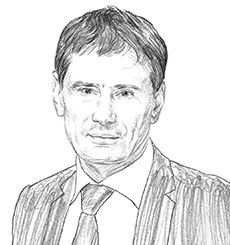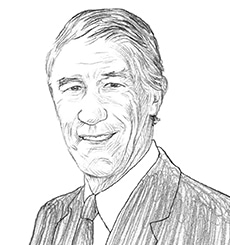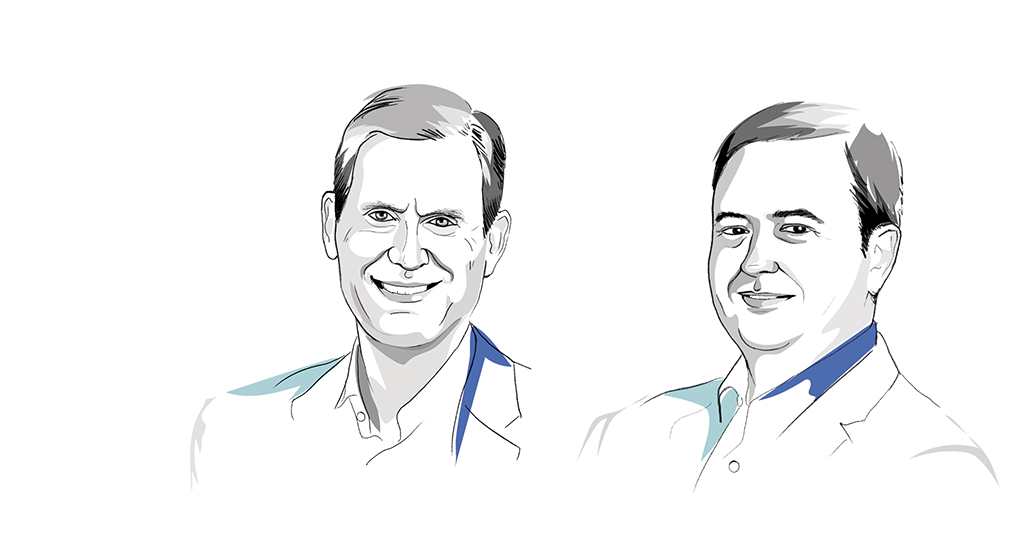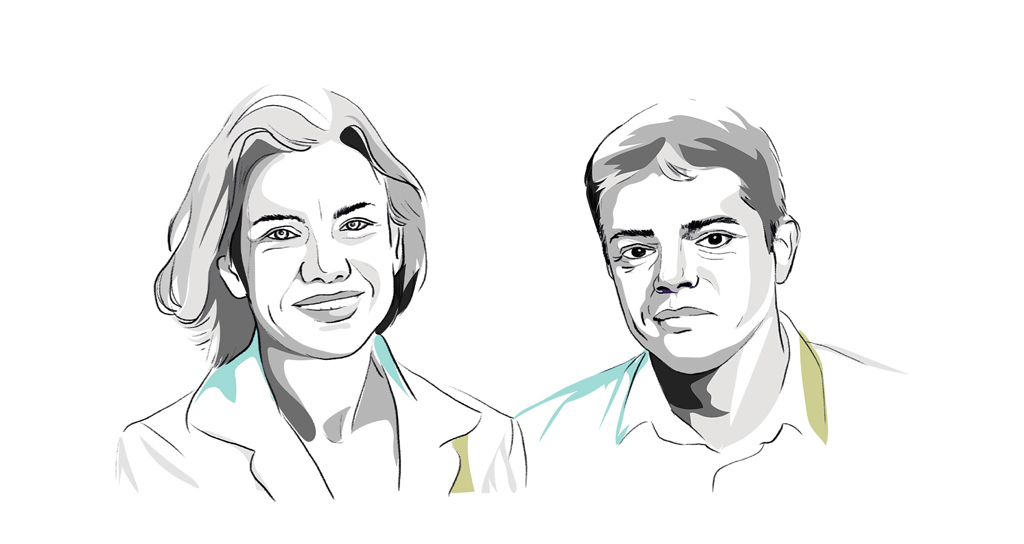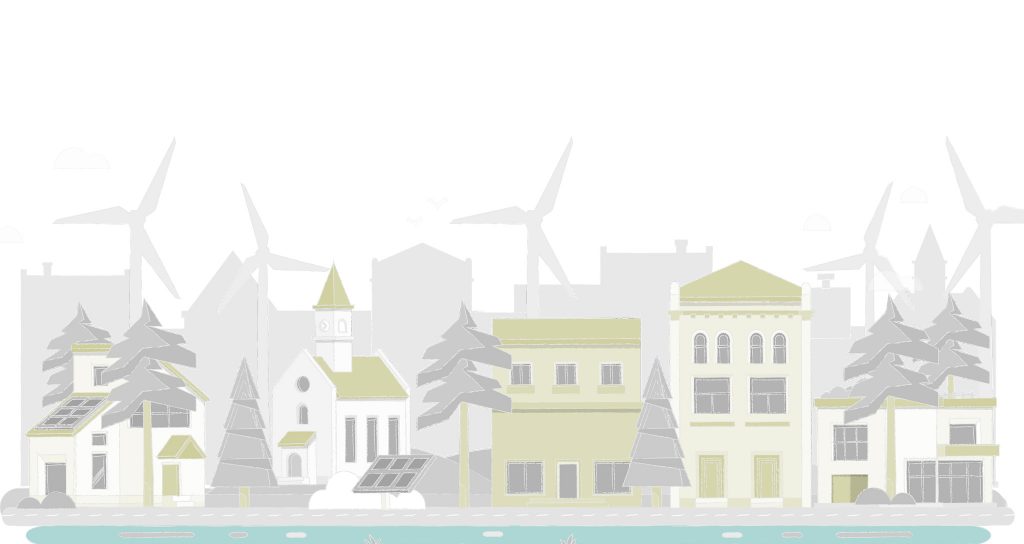Does the development of artificial intelligence pose a threat to society and humanity? Is it inevitable that automation will destroy jobs? Will the Gafa(1) monopoly get the better of digital innovation? No, reply futurist Joël de Rosnay(1) and Hervé Adam, general manager of VINCI Energies France. Provided we defend a collective and connected vision of humanity.
Joël de Rosnay, whereas Bill Gates and Stephen Hawking have expressed their alarm at the consequences of the development of artificial intelligence, you defend an optimistic vision and welcome the prospect of “augmented collective intelligence” or what you refer to as “hyperhumanism”.
Joël de Rosnay. I have criticised the position adopted by Bill Gates and Stephen Hawking, who defend a Malthusian vision in my opinion. Malthus was mistaken in maintaining that global food production would grow linearly and would therefore be insufficient to cover the needs of a world population increasing exponentially. Bill Gates and Stephen Hawking are right when they say that the development of artificial intelligence and robotics technology is exponential. But where they are wrong is in seeing the development of the human brain as linear. Because the evolution of the brain interconnected with artificial intelligence and the digital ecosystem, first in tandem then in symbiosis, is exponential. It leads to what I call augmented human intelligence or “hyperhumanism”.
How does hyperhumanism differ from transhumanism?
J. de R. Transhumanism is elitist, egotistical and narcissistic. We futurists defend a collective vision of humanism, based on the idea of a human brain that is hyperconnected via a global network.
Hervé Adam. You can draw a parallel between the current and future development of artificial intelligence, and the mechanisation of agriculture a hundred odd years ago. The mechanisation process may also have been perceived as a threat to humans. But what happened? Machinery simply replaced humans in the execution of cumbersome and tedious tasks. Humans continued to develop their skills, and today the planet can feed infinitely more people than 100 years ago. It’s a similar story for the brain. Artificial intelligence will complement our lives and enable people to develop their own specific characteristics and, as a result, strengthen their humanism.
Joël de Rosnay, what do you mean when you say that humans are developing new senses?
J. de R. Smartphones make us augmented humans. For example, our GPS systems and webcams give us a sense of ubiquity. Smartphones are much more than just a communication tool; they are a universal remote control that allow us to click in our environment (through RFID chips, QR codes, etc.) and to interact with data and information (virtual and augmented reality) which wouldn’t be accessible without digital technology.
H. A. In industry, we’re already seeing specific manifestations of what you’re describing, and they’re no longer at the experimental stage. The construction sector is also involved: I’m thinking for example of the explosion of BIM (Building Information Modelling). Likewise, geolocation applications make a major contribution to maintenance activities.
Joël de Rosnay
« That’s why innovation departments in businesses don’t serve much purpose as such. What matters is the culture of innovation, the dynamic and systemic process that drives the emergence of innovative systems. »
The impact of factory automation has not yet been properly measured. Some predict heavy job losses in industry, others see an opportunity for growth. What’s your feeling on the subject?
H. A. I’m not worried. The developments in artificial intelligence and robotics will result in new jobs like data scientists, BIM managers and so on, but they will also contribute to the relocation of jobs in industrialised countries since they boost productivity and help create new use patterns.
J. de R. Robotics will destroy jobs in some areas but create them in others, if only in terms of robot creation and maintenance and the robot-machine interface.
The idea of taxing robots to fund social protection was discussed during the presidential election campaign in France. What do you make of the proposal?
J. de R. It’s an idea worth pursuing. Already, the European Community is proposing creating the status of electronic person, with rights and obligations. This “accountability” may result in taxation. From the moment a robot replaces workers – whose contributions secure their social rights – it is theoretically conceivable that it should be taxed so as to finance the protection of these rights.
H. A. Why not? But it would have to be considered on a Europe-wide basis at the very least. If France is the only country to tax robots or if the practice isn’t established in a coordinated way, that will put us at a disadvantage in relation to countries that can attract more production capacity and invest heavily in automation. If you look at Germany alone, automation is at a much more advanced stage than in France and it’s clearly a key factor in the country’s industrial success.
Digital transformation and green transition are terms that suggest a finite process. Could that be misleading?
J. de R. The word transition characterises a shift from one stage to another. Being a surfer, I see it a process of movement. You often hear it said that surfers need to have good sense of balance. But that’s not the case – they need to be in a state of controlled imbalance. If they are balanced, they fall. This image should inspire company managers as they need to think about constantly maintaining the imbalance between an uncertain future and the need to stabilise the business in its environment.
There’s a lot of talk of smart networks, smart vehicles and smart cities. Is everything turning smart? Does the term mean anything anymore?
H. A. I’m not too keen on the term smart as it infers a concept of scale: if you become smart, it means you were less so before or that others are less so. I prefer to talk about “connections”; our cities, cars and networks are becoming connected. In fact, that’s what has been observed in the human brain or with artificial intelligence: “smartness” is to some extent proportional to the number of connections.
J. de R. I’ve often used the terms “intelligence” and “smart” myself in the past, but I’m critical of them now. It’s not objects that are smart. It’s humans – who are rich in the sort of intelligence that is made up of emotions, complex values and symbols which machines are unable to fully grasp. Having expressed this reservation, if I had to define object intelligence, I would say that it requires three things: interactivity, proactivity and real time.
Hervé Adam
« At VINCI Energies, our strength of innovation is not in the development of a technology, but in the ability to assemble and connect these technologies. »
Innovation is gathering increasing momentum. Des this acceleration raise concerns for futurists and more generally for those reflecting on the “world ahead”?
J. de R. I don’t much like the word innovation. Manufacturers, politicians and even futurists present innovation as a sort of toolbox that simply needs to be financed for a new tool or service, like the smartphone or Google, to emerge from it. This being the case, people will wonder why France didn’t invent the smartphone or Google. But innovation is not something isolated; it’s a system. No matter how innovative it might be, a product or service will not change society. What does change society is when a community reappropriates an innovation as part of an integrated system. That’s why innovation departments in businesses don’t serve much purpose as such. What matters is the culture of innovation, the dynamic and systemic process that drives the emergence of innovative systems.
H. A. And that’s very good news for VINCI Energies because our job is to identify the best innovations so that we can put them together and offer our clients their dream solutions! We’re first and foremost integrated service providers. Our innovative strength doesn’t lie in developing technologies but in being able to assemble and connect these technologies.
J. de R. Until now, the acceleration of innovation has been driven by fundamental sequences: printing, radio, television, internet, and so on. But we’ve now entered a process of continuous acceleration. We’re no longer in a phase of linear growth but of exponential development where everything is constantly gaining pace. While politicians continue to adopt a sequential and linear way of thinking, we futurists have less difficulty grasping converging 50-year trends than in projecting ourselves three years ahead.
Likewise, in industry, how can company managers reconcile medium to long-term planning with the acceleration of innovation?
H. A. Every year all our business unit managers present a 3-year strategic plan. It’s a very difficult exercise as a lot of things can now happen in the space of three years. To come back to the surfer image, the concept of agility has become key throughout a business. An agile business is one that is capable of picking up the signals that will enable it to anticipate and redirect its choices so as to keep pace with its development.
The Gafa(2) companies seem increasingly to alone concentrate the resources for long-term investment on basic research. Is that a risk?
J. de R. That’s the reality we’re facing, and it’s a real concern. The Gafa companies have become “business-States”; they operate horizontally, they have a foothold everywhere, they are uncontrollable, and they fail to pay tax in the countries in which they produce. Their financial capacity has far outstripped that of the largest international businesses and even the budget of some States. They build digital monopolies and turn us into “pronetarians”. We work for them and create added value for them.
What can be done?
J. de R. States are powerless to deal with these companies. I believe far more in co-regulation through citizen participation. Connected via a network, citizens themselves are capable, in the name of values, of opposing the monopoly. We’re not yet able to properly measure the impact of mass citizen mobilisation, but a “cyber boycott” is undoubtedly an effective instrument.
H. A. What’s new is that companies like Uber and Airbnb are managing to very quickly build enormous commercial and financial powerhouses while at the same time owning nothing but algorithms that link supply and demand. We might see a form of citizen counter-power emerge just as quickly through the development of systems like Blockchain.
Start-ups are thriving in all fields and segments, and they seem to be supplanting the capacity of big businesses to innovate. Is this a real perception or a “bubble”?
J. de R. Start-ups are more mobile, more interactive, better informed and focus more on forecasting the future. The best-performing big companies are no longer trying to produce intelligence themselves; they buy it wherever it happens to be.
H. A. VINCI Energies has always supported decentralisation, independence and empowerment via human-sized entities. It’s a global group with around 65,000 employees, historically structured as a “federation of businesses”. Today, I would say that we are a network of start-ups that is open to the outside world and fully equipped to foster creativity and innovation internally.
(1) Latest work: “Je cherche à comprendre… Les Codes cachés de la nature”, published by Les Liens qui libèrent, October 2016
(2) Google, Apple, Facebook, Amazon
